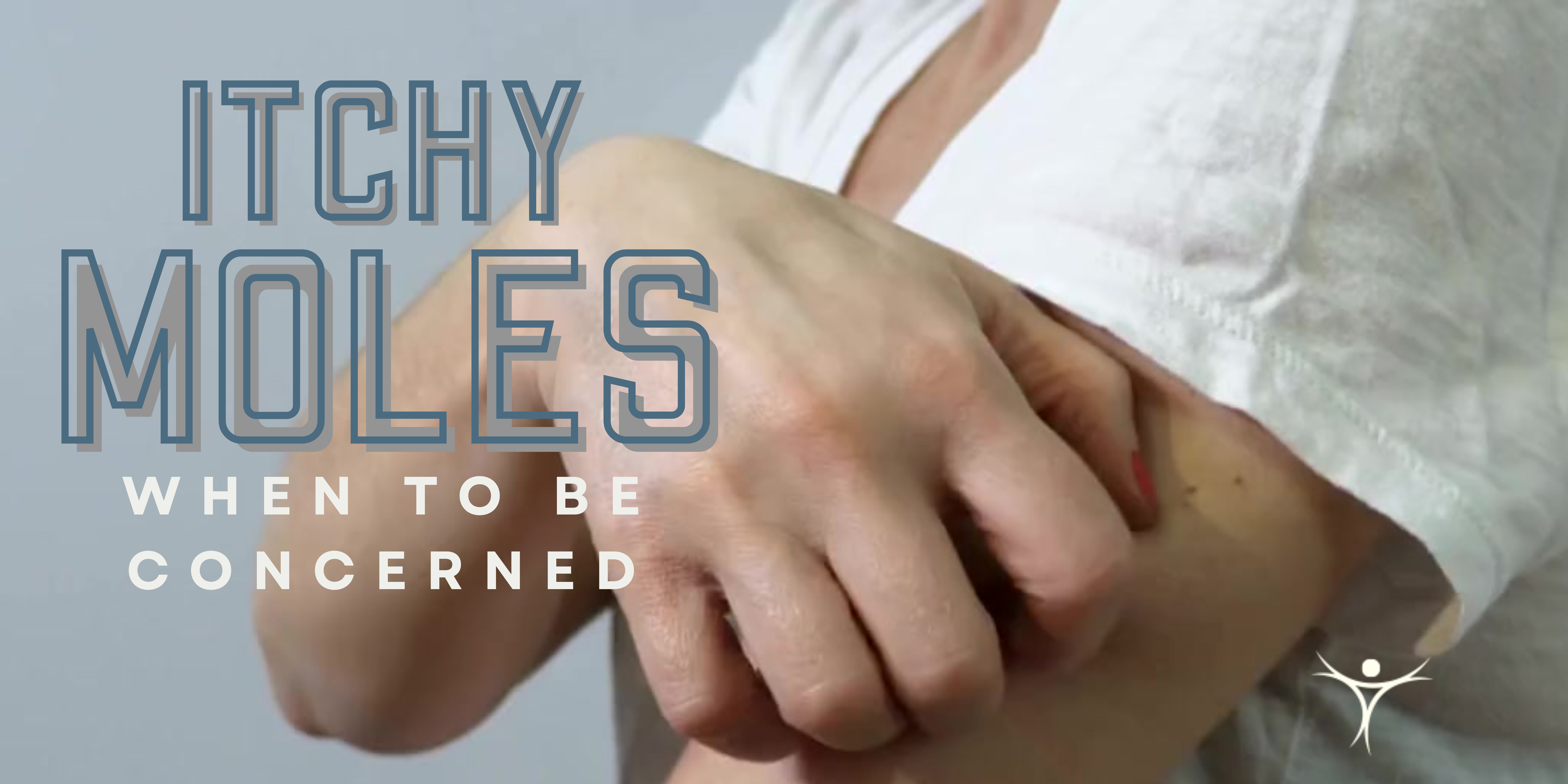Moles (nevi) are common skin features that most of us have, but when they start to itch, crust, or bleed, it’s time to pay closer attention. An itchy mole can range from a harmless nuisance to a warning sign of something more serious. Knowing the difference is crucial for maintaining your skin health.
What Are Moles?
A mole (nevus) is a round or oval spot on your skin, usually flesh colored, brown or black, but can also be tan, red, pink, or even blue. Moles may darken or lighten over time, especially during hormonal changes such as puberty and pregnancy, or as you age. Some moles are flat, while others are raised, which can sometimes cause irritation if they rub against clothing, potentially leading to itchiness.
While most moles are harmless, certain changes in their appearance or behavior could indicate an underlying problem.
Atypical Moles and Melanoma
Atypical moles, also known as dysplastic nevi, are different from the common moles most people have. These moles are often larger, irregularly shaped, and may have uneven colors.
Why should I be concerned about these types of moles? Simply put, atypical moles have the potential to turn into melanoma, the deadliest form of skin cancer.
Signs of atypical moles to watch for include:
- Crusting
- Bleeding
- Persistent itching
These symptoms, along with changes in size, shape, or color, warrant immediate attention from a dermatologist. Early detection is key to effectively treating dysplastic moles and preventing the development of a melanoma.
How Many Moles Are Normal?
The average adult has 10 to 40 moles on their body. Having more than 50 moles is considered a risk factor for melanoma, especially if some of those moles are atypical. While it’s normal for moles to evolve slightly over time, rapid or dramatic changes should not be ignored.
When to Be Concerned
You’ve likely heard of the ABCDE rule to identify suspicious moles. Here’s what it stands for:
- Asymmetry: One half of the mole doesn’t match the other.
- Border: The edges are irregular, scalloped, or poorly defined.
- Color: The mole has multiple colors or an uneven distribution of color.
- Diameter: The mole is larger than 6mm (about the size of a pencil eraser) or is progressively growing.
- Evolving: The mole changes in size, shape, or symptoms develop like itching or bleeding.
If you notice any of these signs, it’s time to schedule a skin check with a dermatologist.
What Does a Skin Check at Central Missouri Dermatology Look Like?
During a skin check at Central Missouri Dermatology, our dermatologists perform a thorough examination of your skin from head to toe. Using a dermatoscope, they can inspect moles for any irregularities and document findings to monitor changes over time. If a mole appears suspicious, a biopsy may be recommended to determine if it’s cancerous. This proactive approach ensures your peace of mind and optimal skin health.
Most moles don’t need to be treated.
If the mole itches enough to bother you, or if your dermatologist thinks it might be cancerous, you can have it removed. Dermatologists use one of two procedures to remove moles:
Surgical excision: The dermatologist numbs your skin and then cuts out the whole mole. Your skin is typically closed with stitches.
Surgical shave: Your dermatologist can do this procedure if your mole is small and/or for a biopsy. After your skin is numbed, they use a small blade to remove the top part of the mole that is raised above the rest of your skin. You won’t need stitches afterward. Of note, a shave removal is not performed if your mole proves to be cancerous. Malignant moles will need surgical excision to ensure complete removal.
Your dermatologist may do a biopsy. In this test, they remove a small sample of the mole or the whole mole and send it to a laboratory. There, a dermatopathologist looks at the sample under a microscope to check for cancer. Your dermatologist will discuss the results of a biopsy with you.
FAQ: Your Questions About Moles Answered
Q: Do itchy moles always mean cancer?
A: No, itching alone doesn’t mean a mole is cancerous. It could be irritated by clothing or environmental factors. However, persistent itching should be evaluated.
Q: Can moles appear later in life?
A: Yes, it’s common to develop new moles in childhood and early adulthood. If a new mole appears after age 30, it’s worth monitoring for unusual features.
Q: Can I remove a mole at home?
A: No, removing a mole at home is unsafe and could lead to infection or incomplete removal of potentially dangerous tissue. Always consult a dermatologist.
Q: How often should I get a skin check?
A: If you have a family history of skin cancer or numerous moles, annual skin checks are recommended. Otherwise, discuss the ideal frequency with your dermatologist.
Q: Are raised moles more likely to become cancerous?
A: Not necessarily. Raised moles can be benign or atypical. The key is monitoring for changes in their appearance or behavior.
Itchy moles are often harmless but should never be ignored, especially if they’re accompanied by other concerning signs. A professional skin check at Central Missouri Dermatology can provide clarity and ensure your skin stays healthy.

